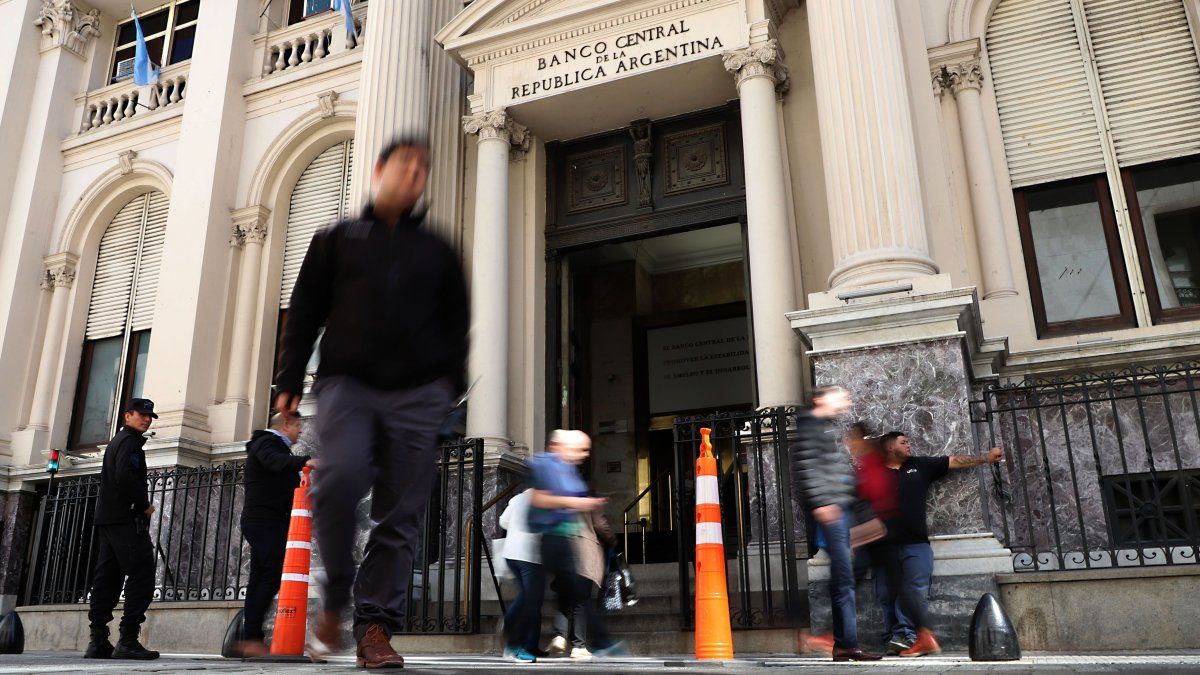BITCOIN BONDS BACKRUND
The aggressive tariff strategy of Donald Trump It has had an impact on the world economy, unleashing significant volatility in financial markets. As high -risk assets, cryptocurrency has proven especially vulnerable to these disturbances. Under the weight of Trump’s tariff policies, the price of Bitcoin collapsed to a minimum of approximately $ 74,500 YTD this Monday, April 7, 2025, which reflects the intense pressure that the cryptocurrency market feels.
In the midst of this agitation, Federal Reserve Nor has shown any inclination towards the cuts of emergency interest rates. The high tariffs inevitably feed inflation, as evidenced by the growing data, which makes the reduction of rates an unlikely response given the Fed mandate. This dynamic suggests an imminent bearish market for cryptocurrencies in 2025.
However,Is this fall really inevitable? A recent proposal of the Bitcoin Policy Institute, a non-profit organization based in the United States, offers a possible countermelted: Bitcoin-Mejorado.
Treasury bonds. Although this concept lacks the official support of the US government, it presents a convincing solution to the current economic challenges of the country. Bitcoin bonds could deal with the growing American debt crisis and, at the same time, inject liquidity into the Bitcoin market, without depending on the federal reserve types. This article analyzes why Bitcoin bonds are important, what they are, their mechanisms and their potential to determine the price of bitcoin in a post -arrived world.
Why do you have to pay attention to the Bitcoin Bonds
Bitcoin Bonds could redefine the financial panorama by linking public debt to cryptocurrency, with deep implications for the future movement of the price of Bitcoin. This is the reason why they demand attention:
The support of the government promotes Bitcoin: if the US issues Bitcoin bonds, it would be a historical support for cryptocurrency by an important government. This could legitimize bitcoin worldwide, attracting institutional investors and causing generalized adoption, key factors for price growth.
Mass purchasing power: Imagine the issuance of 1 billion dollars in Bitcoin bonds, of which 10% (100,000 million) would go to the purchase of Bitcoin. Given the Bitcoin market capitalization of around 1 billion dollars, this influx could significantly increase the demand, pushing up rising prices.
A price amplification loop: as government purchases upload the price of Bitcoin, Bitcoin bonds become more attractive to investors, which could lead to a greater bond issuance. This cycle could amplify the value of Bitcoin over time.
Bitcoin bonds are not just a fiscal tool – they could be a catalyst for Bitcoin’s next great rebound, turning them into a critical development for investors and the cryptocurrency market alike.
What are Bitcoin Bonds?
The Bitcoin Bonds, or Bitbonds are hybrid debt titles that combine the stability of traditional bonds with Bitcoin’s growth potential (BTC). Issued by governments or corporations, the Bitbonds collect capital for projects while allocating a part of the funds to the purchase of Bitcoin. Investors receive a fixed interest rate plus a part of the revaluation of the price of Bitcoin, which makes Bitbonds an innovative bridge between conventional investments of fixed income and the volatile world of cryptocurrency.
Unlike traditional bonds, which only offer fixed yields, or direct investments in Bitcoin, which expose the headlines to great volatility, Bitbonds combine both elements. This dual structure attracts investors seeking predictable income along with exposure to cryptocurrencies, without the complexities of digital asset management. For emitters, Bitbonds take advantage of the growing interest in cryptocurrencies, expanding their investor base and aligning at the same time with modern financial trends.
How do Bitcoin Bonds work?
According to the Bitcoin Policy Institute proposal, Bitbonds will be issued by entities such as governments that finance public infrastructure or corporations that finance their expansion. The issuance resembles traditional bonds but introduces a cryptodye turn: a percentage of income is invested in Bitcoin, safely maintained during the bonus term.
Bitcoin Bonds or Bitbonds work through a structured process that integrates debt and cryptocurrency:
Issue: The Treasury sells bonds, raising funds as in any bond sale.
Bitcoin purchase: 10% of income Bitcoin, which is saved in a government -controlled portfolio, and the remaining 90% is used to finance government operations.
Interest payment: investors receive 1% per year ($ 10 per $ 1,000 of bond).
- Investment allocation
The allocation strategy is a key feature:
- 90% of the funds are allocated to the issuer’s project, whether the construction of roads, renewable energy facilities, government operations or corporate initiatives.
- 10% of the funds are used to buy Bitcoin, stored in a custody wallet until its expiration or a predefined amortization period.
- This division guarantees compliance with the main objective of capital collection while introducing the bitcoin bullish potential.
Yield structure
- Investors benefit from two income flows:
- Fixed interest rate: a constant annual performance (for example, 1% in 10 years) on the entire investment, similar to traditional bonds.
- Bitcoin appreciation: a limited part of Bitcoin’s price profits (for example, up to 4.5% composed annually on the 10% allocation). Excess gains above the limit is usually divided between investors and the issuer (for example, 50/50).
Hypothetical example
- Imagine a 100 million dollar bitbond:
- 90 million finance government operations.
- 10 million buy Bitcoin at $ 50,000 (hypothetical) per BTC, acquiring 200 BTC.
- Investors earn 1% per year (1 million dollars) over 100 million dollars.
If Bitcoin rises to $ 100,000 at maturity, the 10 million dollars become 20 million. Investors receive limited profitability (for example, 14.5 million dollars in total), and the issuer and investors share excess (5.5 million dollars divided).
Bitcoins.jpg
This example highlights the balanced attractiveness of Bitbonds: stability and growth.
The growing public debt burden in the United States raises structural challenges that require unconventional solutions. With about 9 billion dollars in federal debt overcoming in the next twelve months, and more than 14 billion in the next three years, fiscal sustainability is at a crossroads. In this context, a disruptive proposal arises: Bitcoin Bonds. These financial instruments, which combine the traditional security of treasure bonds with the bullish potential of cryptocurrencies, could offer the US government an alternative way to face their fiscal dilemma.
Reduction of indebtedness costs
One of the main advantages of Bitcoin Bonds lies in their ability to reduce interest -associated interest rates. By offering a 1% profitability – not lower than that of current treasure bonds – these bonds could represent significant interest savings for the treasure. The incentive for investors lies in the potential for the appreciation of Bitcoin included in the instrument. In case of a rise in the price of the cryptocurrency, the total performance would far exceed that of traditional bonds, maintaining competitiveness without increasing the financial burden of the State.
A Bitcoin strategic reserve
Beyond the financial, the Bitcoin Bonds would allow the US to build a Bitcoin reserve, transforming cryptocurrency into a strategic asset. This would have multiple implications:
-
Coverage against inflation and weakening of the dollarhaving a decentralized and limited offer asset.
-
Strengthening US leadership in the digital economyconsolidating its influence on the financial infrastructure of the future.
-
Greater geopolitical leveragein a scenario where cryptocurrencies are progressively integrated into global economic relations.
A tool with political and economic implications
From the political point of view, the issuance of bonds backed by Bitcoin would project an image of visionary leadership and institutional innovation. This could be especially relevant in an era marked by the transition to a new post-aronclical economic order, where technological and financial resilience becomes key.
Economically, these instruments represent a proactive strategy to a structurally high debt. Instead of unpopular austerity measures or fiscal increases, the Bitcoin Bonds would allow leveraging a growing asset to reinforce national solvency, aligning state financing with emerging trends in the global financial market.
The impact of Bitcoin Bonds on the price of Bitcoin
While the market currently bases its expectations for Bitcoin’s rise in the federal reserve type cuts, many believe that only lower interest rates can unlock the necessary liquidity to boost the prices of the rise cryptodye. However, this point of view overlooks Bitcoin’s remarkable recovery from approximately $ 15,000 in early 2023 (Coinmarketcap, 2025), a period in which the Federal Reserve continued to raise the types, although liquidity remained abundant. This suggests that type drops are not the only mechanism to inject liquidity into the market.
At that time, arbitration operations through the Japanese Yen were one of the main sources of liquidity in the financial market. Today, with the Yen showing signs of imminent rates of types and the US dollar experiencing modest type reductions, the conditions that once fed arbitration based on the Yen are fading. As a result, the cryptocurrency market urgently needs a new liquidity pathway. Given the recent hard line posture of the president of the Federal Reserve, Jerome Powell, seems unlikely that significant cuts of short -term types occur, which makes alternative solutions such as “bitbonds” an attractive option.
The Bitcoin Policy Institute estimates that the full Bitcoin Bonds issuance could raise up to 2 billion dollars, a sum that represents only 20% of the refinancing needs of the US debt planned by 2025. According to this plan, 10% of the collected – equivalent to 200,000 million dollars – would be allocated to the purchase of Bitcoin, which would injected an important pressure on the market.
To contextualize, the Bitcoin ETF saw a net ticket of around 60,000 million dollars in 2024, promoting an increase in the price of 119% that year. It should be noted that this figure of 60,000 million dollars is only one third of the 200,000 million proposed for the purchase of Bitcoin through the bond initiative. If the concept of Bitcoin bonds came to fruition, the resulting capital influx could boost the price of Bitcoin beyond the USD 200,000, according to the predictions of some analysts.
*Director of Coinex for Latin America.
Source: Ambito
I am a 24-year-old writer and journalist who has been working in the news industry for the past two years. I write primarily about market news, so if you’re looking for insights into what’s going on in the stock market or economic indicators, you’ve come to the right place. I also dabble in writing articles on lifestyle trends and pop culture news.




